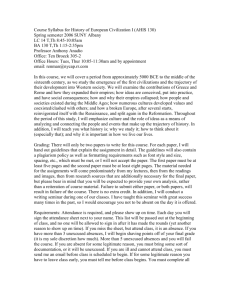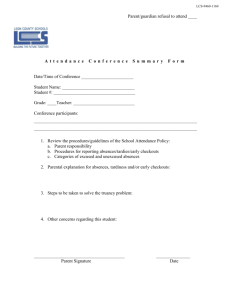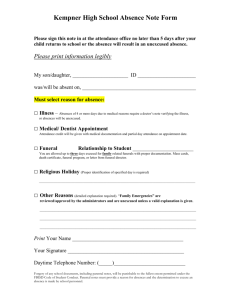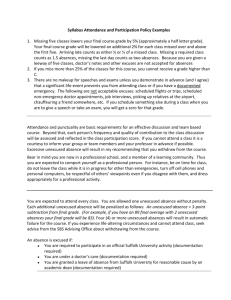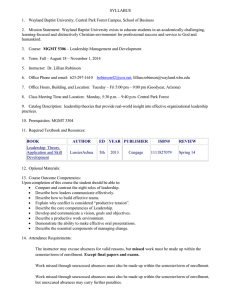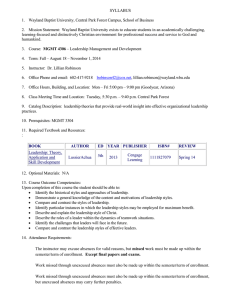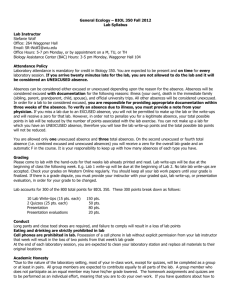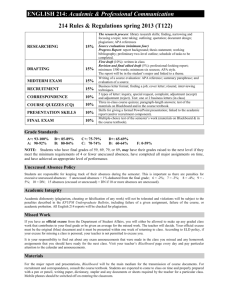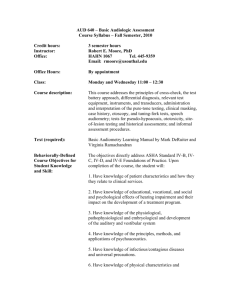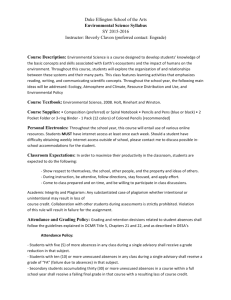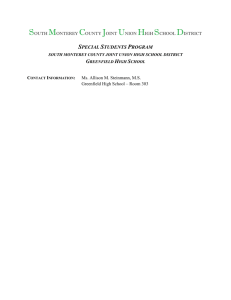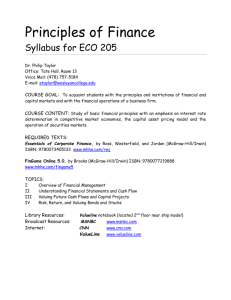Art 1030: Art Appreciation
advertisement
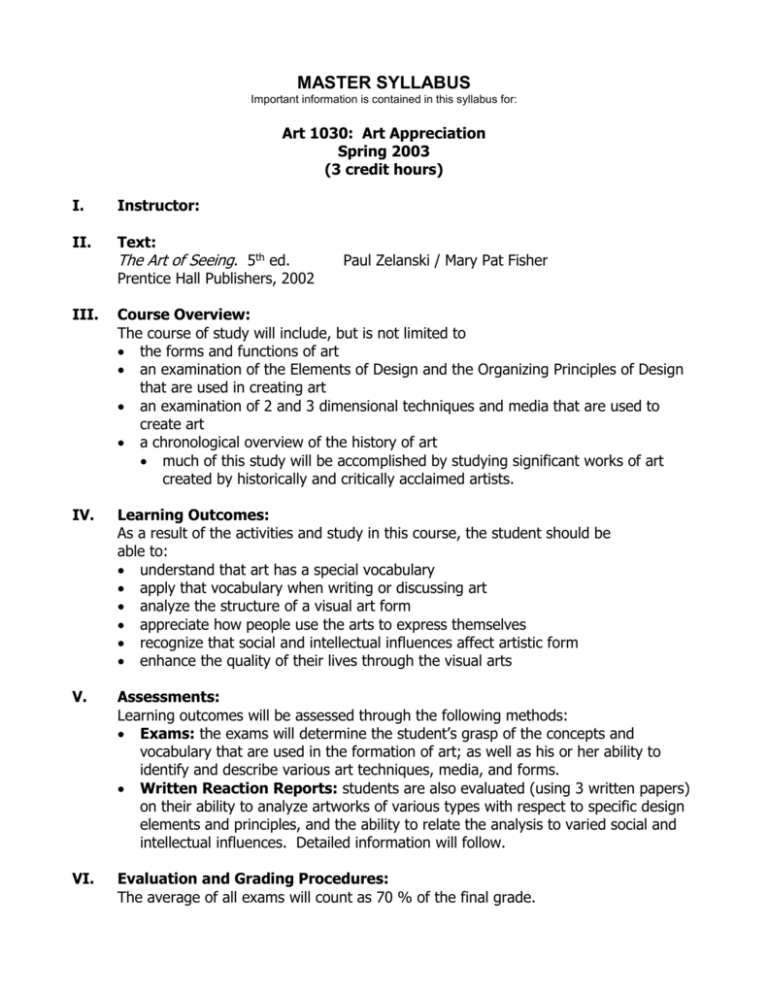
MASTER SYLLABUS Important information is contained in this syllabus for: Art 1030: Art Appreciation Spring 2003 (3 credit hours) I. Instructor: II. Text: The Art of Seeing. 5th ed. Paul Zelanski / Mary Pat Fisher Prentice Hall Publishers, 2002 III. Course Overview: The course of study will include, but is not limited to the forms and functions of art an examination of the Elements of Design and the Organizing Principles of Design that are used in creating art an examination of 2 and 3 dimensional techniques and media that are used to create art a chronological overview of the history of art much of this study will be accomplished by studying significant works of art created by historically and critically acclaimed artists. IV. Learning Outcomes: As a result of the activities and study in this course, the student should be able to: understand that art has a special vocabulary apply that vocabulary when writing or discussing art analyze the structure of a visual art form appreciate how people use the arts to express themselves recognize that social and intellectual influences affect artistic form enhance the quality of their lives through the visual arts V. Assessments: Learning outcomes will be assessed through the following methods: Exams: the exams will determine the student’s grasp of the concepts and vocabulary that are used in the formation of art; as well as his or her ability to identify and describe various art techniques, media, and forms. Written Reaction Reports: students are also evaluated (using 3 written papers) on their ability to analyze artworks of various types with respect to specific design elements and principles, and the ability to relate the analysis to varied social and intellectual influences. Detailed information will follow. VI. Evaluation and Grading Procedures: The average of all exams will count as 70 % of the final grade. The average of the written Reaction Reports will count 30 % of the final grade. Grading guidelines: VII. 90 80 70 60 – 100 = A - 89 = B - 79 = C - 69 = D Attendance Policy: Grades will be affected by tardiness and unexcused absences as follows: If there are no unexcused absences, 3 pts. will be added to the final grade. If there is 1 unexcused absence, 2 pts. will be added to the final grade. If there are 2 unexcused absences, 0 pts. will be added to the final grade. If there are 3 unexcused absences, the final grade will be lowered by 5 points. If there are 4 unexcused absences, the final grade will be lowered by 10 points. If there are more than 4 unexcused absences, the student should consider the possibility of withdrawal to avoid a failing grade. Each late arrival for class counts as ½ of an absence. Without prior permission, each early “departure” from class also counts as ½ of an absence. It is the student’s responsibility to contact the instructor regarding his or her tardiness, absences, or early dismissals. (The instructor will not ask you why you were late or absent.) Regardless of whether or not students attend a given class meeting, they are entirely responsible for what takes place in class (e.g. notes, assignments, in-class work, due dates, etc.) VIII. Disability Statement: If, because of a documented disability, you require assistance or reasonable accommodations to complete assigned course work (such as modifications in testing, readers, special equipment, etc.) you must register with Disability Support Services and notify your instructor within the first two weeks of the semester. Disability Support is located in the Office of Student Development and Testing (U118, 423-4786217 or 423-472-7141). IX. Withdrawal Information: The last day to withdraw from this course is ______________________ . X. Academic Integrity: Cleveland State students are required, as a condition of good standing and continued enrollment, to conduct themselves properly in class. Such proper behavior includes academic honesty, civility and respect for others and private property. Please refer to the Student Handbook portion of the catalog for further information. 2
